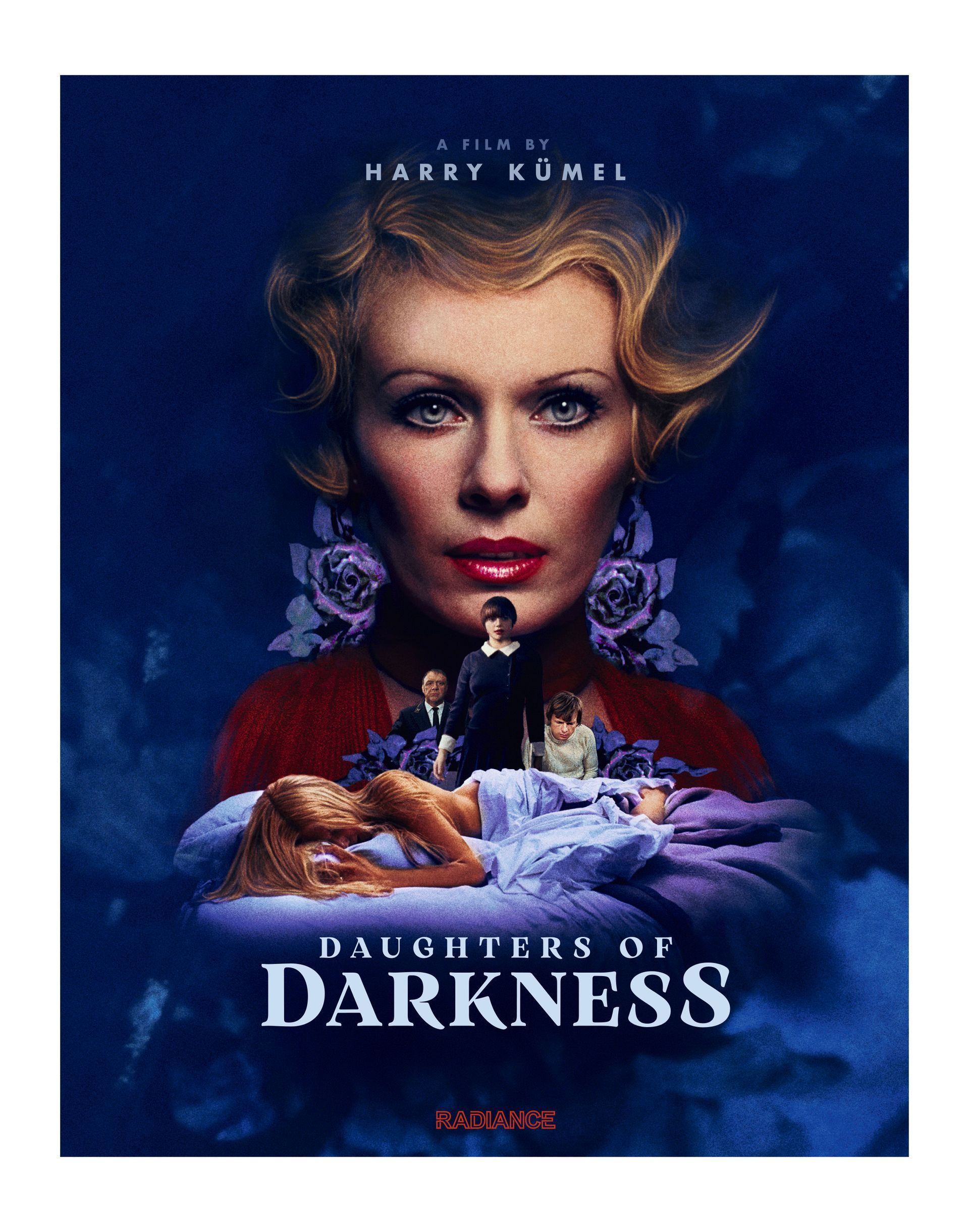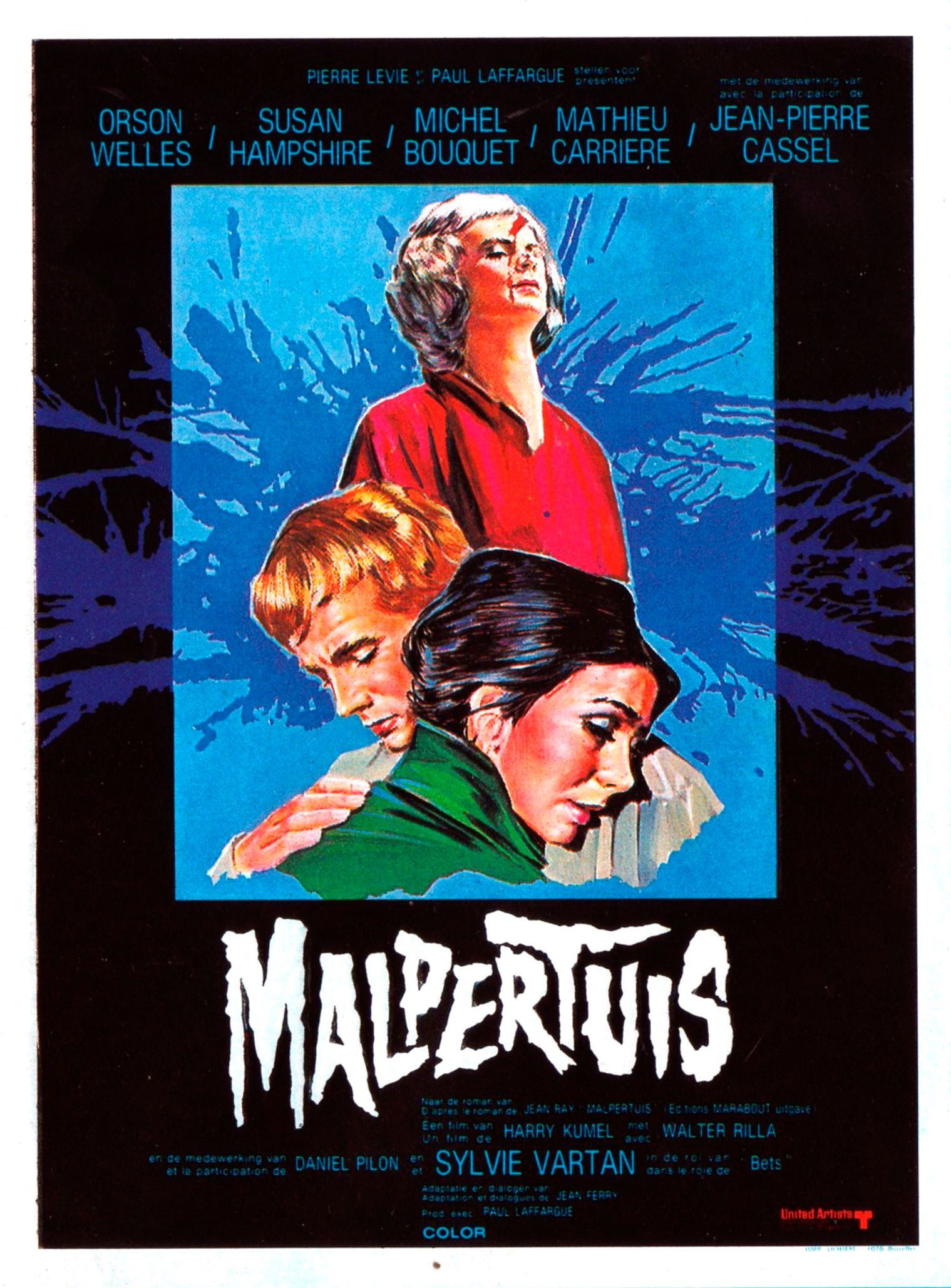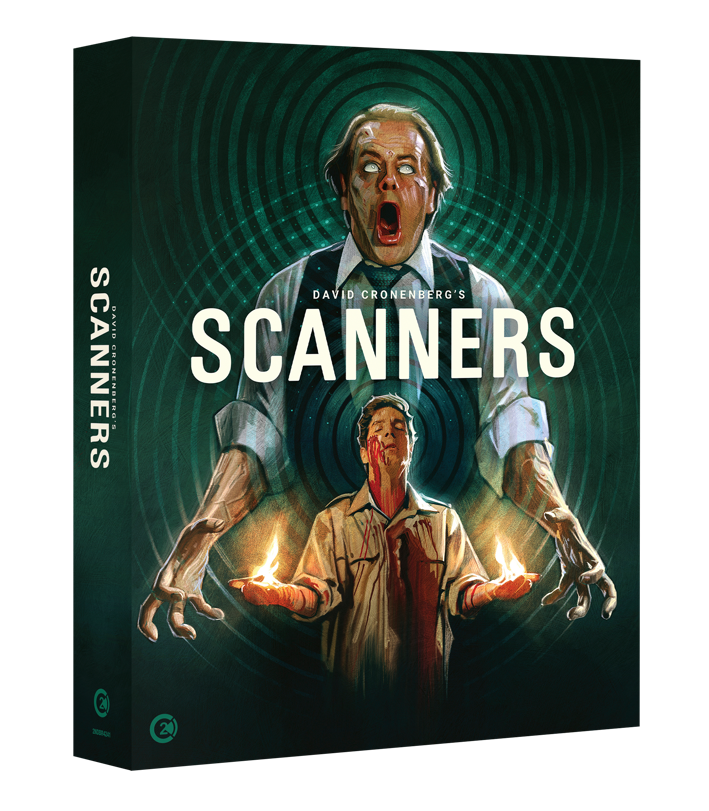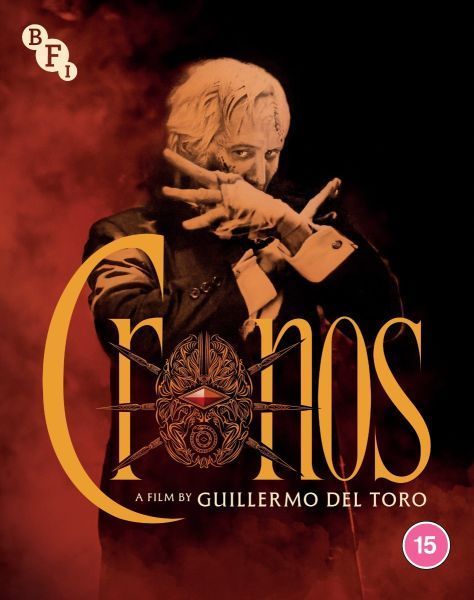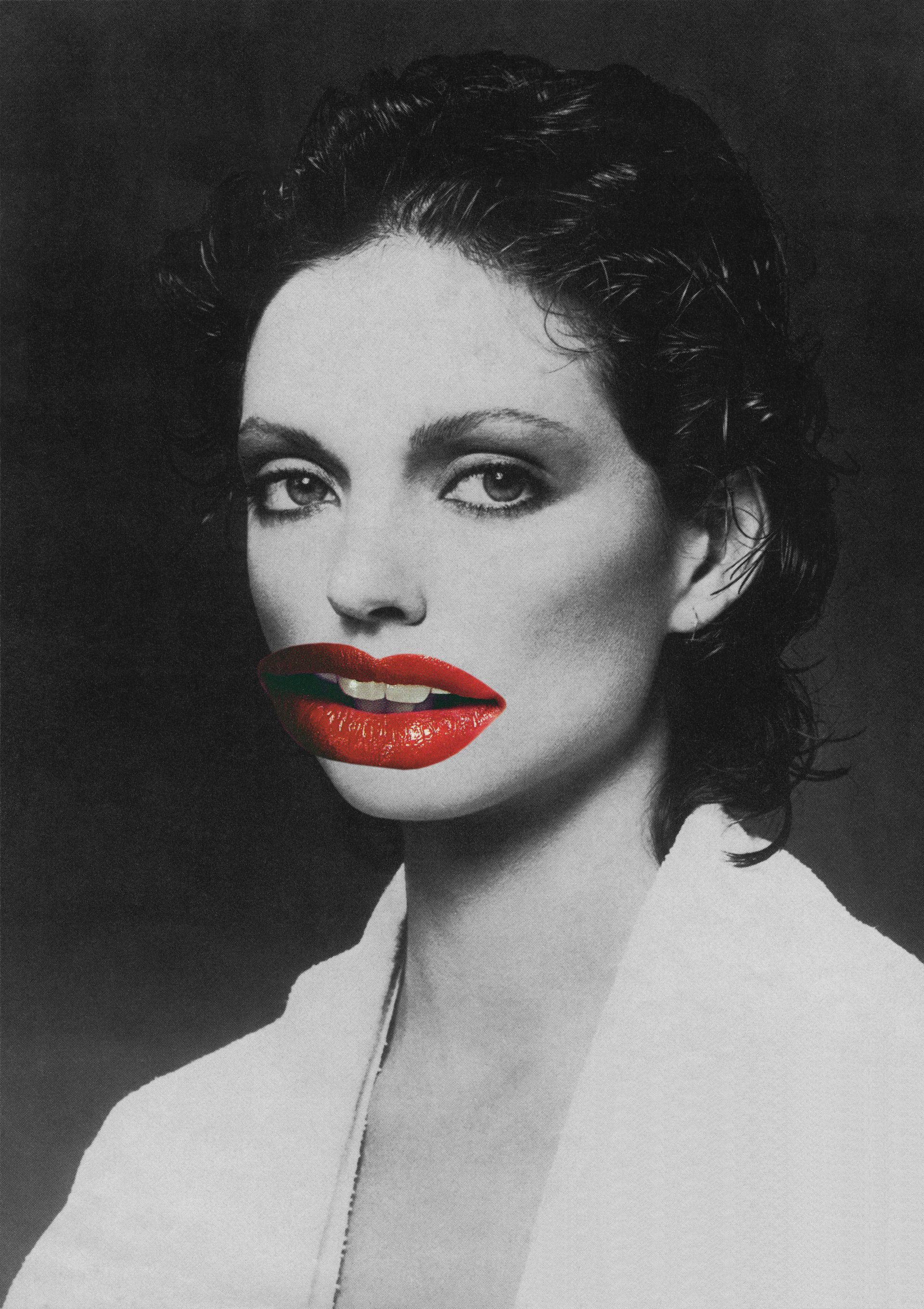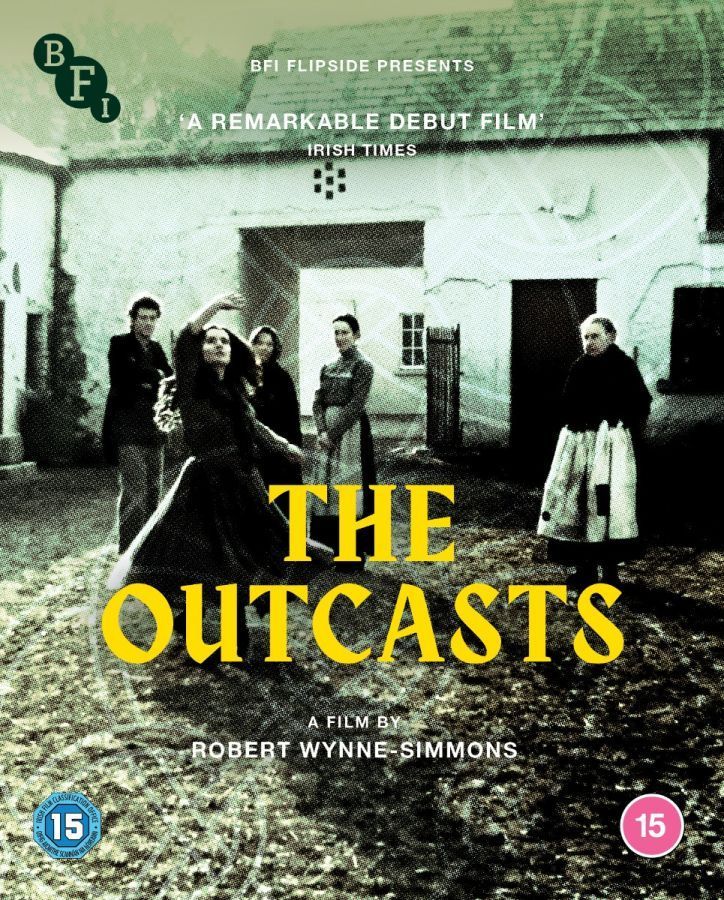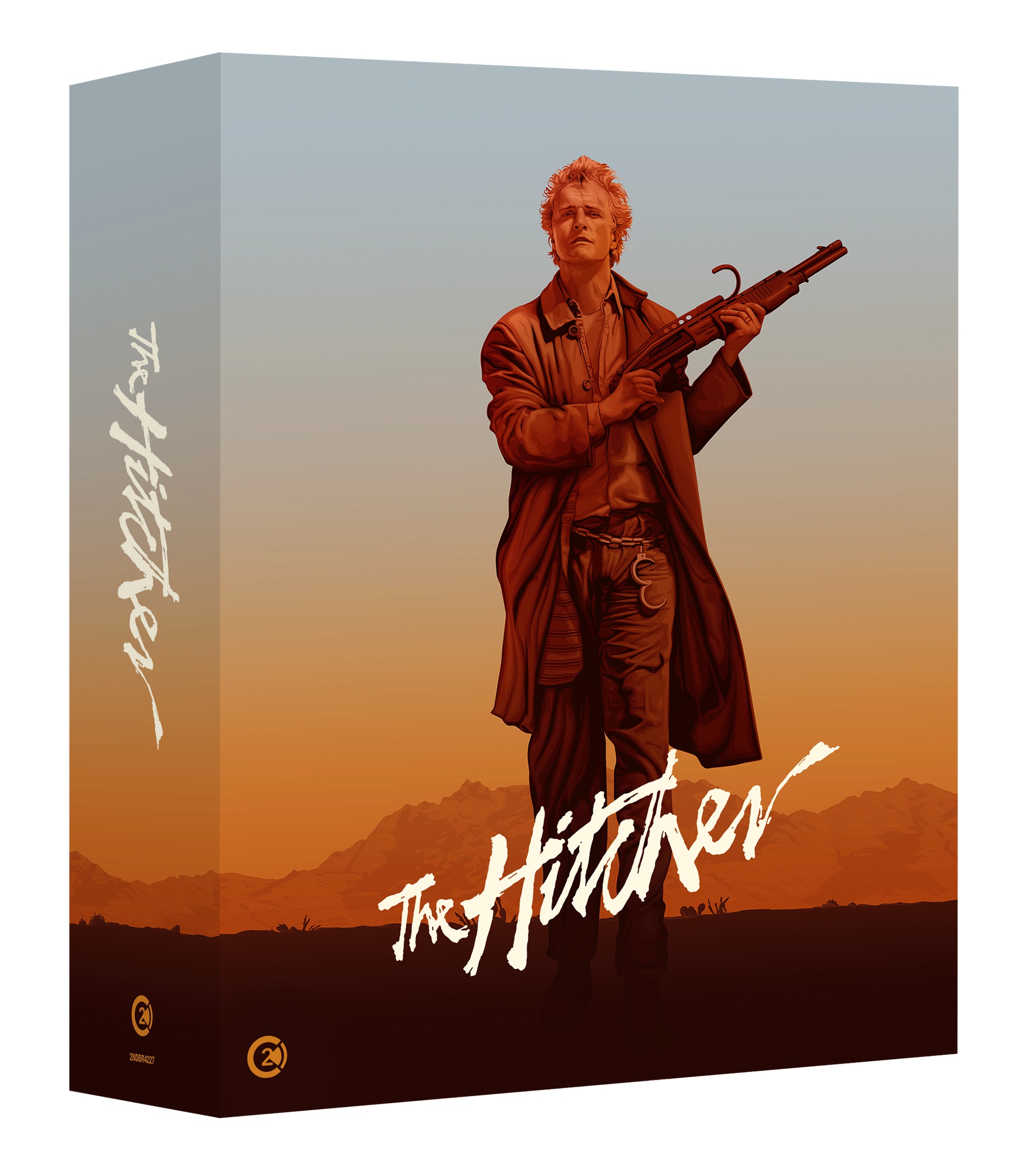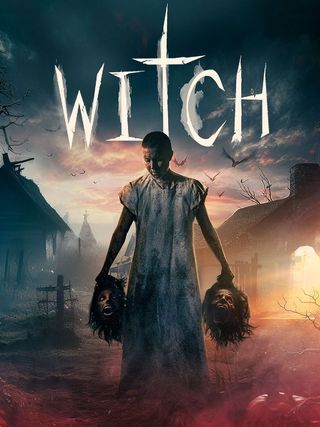Exhibitions - Style
Exhibitions - Style
Biba and Beyond, Barbara Hulanicki interview, Sidewalk to the Catwalk, Club to Catwalk, 20th Century Icons, Lloyd Johnson; The Modern Outfitter.
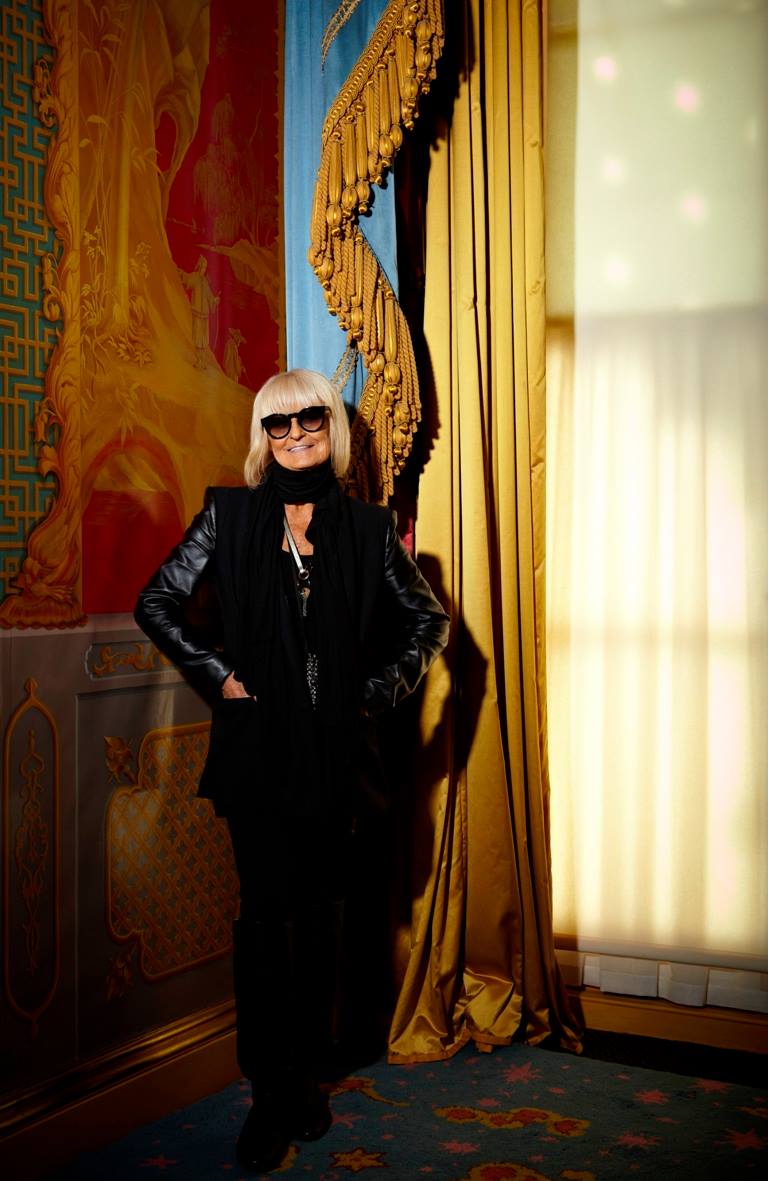
Biba and Beyond Brighton Museum and Art Gallery 22/9/12
Barbara’s early life is illustrated by personal photos of her parents, aunt and siblings, a Polish family who moved to UK after the death of father Witold. Her subsequent boarding school education in Worthing and art student days at Brighton Art College are also touched on, and the inclusion of her design for a beach outfit, a winning entry in an Evening Standard competition, subsequently made up by Norman Hartnell, is a real find. The model drawing’s coltish beauty, with its resemblance to Audrey Hepburn is no coincidence, as Barbara has said that she took much inspiration from popular films at the time.
Biba’s beginnings as a mail order business are well documented, with even an example of the headscarf from the gingham outfit that first propelled the label into the fashion world’s stratosphere. Challenged, along with four other young women, to come up with a design for an outfit to retail at Gns. 2 (£2.10 in new money) Barbara’s design won out and she suddenly found herself with 17,000 orders to fill. This early experience of delivering must-have clothes on a tight profit margin was evidently useful training for later life, as Biba was never beyond the pocket of the average girl (or boy).
The picture of the short-lived Biba store on Queen’s Road Brighton is a remarkable survival, and the Regency terrace it was housed in, is recognisable today. Leaving the photos and early life behind, we come to the substance of this show; the stunning collection of Biba dresses, coats, blouses, waistcoats, shoes and more in the bold cuts and muted ‘auntie’ colours that are now so emblematic of the baroque period of the late 60’s and early 70’s. A huge, funnel necked coat in burnt orange looks imposing on its stand, next to the lace dresses that necessitated underwear in public, to avoid arrest. Tiny waisted, slim-armed coats in bold stripes or jazzy, art deco patterns, with lapels that reach out to touch the biceps, vie with angel sleeved, sheer metallic-cotton shifts. Biba’s signature built-up shoulders, a full decade before TV shows like ‘Dallas’ and ‘Dynasty’ used the idea, give the women’s suits, with their generous lapels and cinched-in waists a 40’s film star look, not unlike the eternally stylish Lauren Bacall.
The breadth of Biba artefacts is breath taking, with invitation cards, one to see the New York Dolls at the Rainbow Rooms, £2.50, meal included, stationary, diaries, even cans of beans, coffee and a packet of soap flakes from Biba’s household department, all in the distinctive Biba black livery with line-drawn illustrations. Even some of the design ‘blanks’ survive, and are here to see, although sadly not to ink and use. Makeup bottles, trays and tubes are here in profusion, with even some of the smaller display boxes, and a mail order ‘pillow’ box representing some of the most sought after items. Big Biba’s status as a sort of hip, young Harrods may have been an early hint that the brand was becoming so large, it could not have grown any further, but the bravery of its founders and the faith of its staff cannot be doubted.
There’s ample audio-visual material to fill in the gaps and enlighten further, with recordings of former customers and workers adding their comments and memories, and you’ve got until 14th April 2013 to board the Brighton Belle and visit the Pavilion Museum and Art Gallery. Hello? Oh, you’ve gone already.
23/9/12
Interview with Barbara Hulanicki 19/9/12
You begin as an illustrator, but what made you decide to become a fashion designer?
You begin as an illustrator, but what made you decide to become a fashion designer?
'I went to Brighton Art School and studied fashion and general arts. After two years I left to work in an illustration studio as that seemed the quickest way to become independent.'
Did you design with young people in mind, or design for yourself and hope others would like it? Why?
‘Yes for the young. I was young and earning lots of money and I could not buy any clothes I liked to wear to work, which was usually haute couture shows in Paris.’
Did you think that Biba would take off the way that it did? Did you plan for it or not? How did you react when it did take off?
'Biba grew organically. Both Fitz, my husband (Stephen Fitz-Simon) and I knew our market as we were ten years older and a trifle more experienced. We worked very long hours and I designed clothes that people wanted to buy.'
How far ahead were you looking with each collection?
‘It was daily deliveries like bread. There were no collections, as it was coming out of one head (mine) it was very naturally coordinated.’
‘It was daily deliveries like bread. There were no collections, as it was coming out of one head (mine) it was very naturally coordinated.’
When Big Biba opened, did you at any point feel that you may have taken on too much? If so, how did you cope?
‘Never. We expanded some departments, added things like selling food, added the Rainbow Room, which we took advice on. We consulted experts. The problem was not expansion, or the fear it wouldn’t work, but getting things manufactured. People tended to have just one pair of shoes then, which they wore with everything. We changed that.’
If you could turn the clock back and do something differently, or not at all, what would it be? Why?
If you could turn the clock back and do something differently, or not at all, what would it be? Why?
‘Don’t have partners. Partners mess around with you. The money guys were always trying to run things. Everyone who worked with me got totally involved with the business. The money guys wanted to go home at 5.30, we worked until we dropped.’
Some have said Biba was untidy, and easy to steal from. Is this true?
‘The floor did tend to be littered with cigarette packets, but we did provide sand drums for the cigarettes. The clothes would be everywhere, with girls trying them on and then throwing them on the floor when they tried another one on. It was a nightmare to keep it tidy, but the staff girls were very good. They had a good eye for anyone trying to steal, as there was quite a bit of theft from the store. We didn’t restrict how many clothes you could take in to the changing rooms, then. There were security cameras in the second store but the light levels were low, so not much use. The girls had to watch everyone.’
Did you see Men’s Biba as an experiment, or an integral part of Biba? Was it popular? Did men go there on their own or as part of a trip with their girl/boyfriend?
Some have said Biba was untidy, and easy to steal from. Is this true?
‘The floor did tend to be littered with cigarette packets, but we did provide sand drums for the cigarettes. The clothes would be everywhere, with girls trying them on and then throwing them on the floor when they tried another one on. It was a nightmare to keep it tidy, but the staff girls were very good. They had a good eye for anyone trying to steal, as there was quite a bit of theft from the store. We didn’t restrict how many clothes you could take in to the changing rooms, then. There were security cameras in the second store but the light levels were low, so not much use. The girls had to watch everyone.’
Did you see Men’s Biba as an experiment, or an integral part of Biba? Was it popular? Did men go there on their own or as part of a trip with their girl/boyfriend?
‘Totally integral. We started out with a T Shirt, the boys wanted them. It grew from there. Then we did trousers, jacket, we did take advice on it. We had cutters, tailors, plenty of support. I had a baby, so the baby department followed. Freddy Mercury was very important, and his girlfriend, Mary Austin, who worked for Biba.’
‘The average Biba man came in from the provinces and London, but there were a lot of music people as well, they came to hang out, they bought things whilst they were there. There was men’s makeup too, it sold well, and even the girls bought it.’
What was your impression of Brighton when you were growing up?
‘A lovely English seaside town, windy and blustery, freezing in Winter, all the shopkeepers dreaming about the sunny summers they did well in, always a lot of drama in the local press. The architecture was so impressive, the Pavilion, the Ammonites on the capitals of house fronts’
What was your impression of Brighton, when you were a student?
‘I went to a boarding school in Worthing, but lived in Brighton the rest of the year. Like everyone at the time, I longed to be independent, and to go to London.’
What memories do you have of Brighton Biba?
What was your impression of Brighton, when you were a student?
‘I went to a boarding school in Worthing, but lived in Brighton the rest of the year. Like everyone at the time, I longed to be independent, and to go to London.’
What memories do you have of Brighton Biba?
‘We had the whole of a Regency house on Queens Road, we had the upper part as a flat and the shop for Biba, the idea being it could be a weekend place for us, Fitz and I, as well as a shop. The shop didn’t work out so well, we found that if you do more than one shop, they all end up looking like smaller versions of the main one. ‘
‘The small shop was more a feature of the 60’s, Carnaby Street, and John Stephen, he was a real forerunner in fashion. It didn’t fit with the 70’s, the shops expanded. I took Fitz to Carnaby Street in the 60’s, it wasn’t his style, and the clothes were tiny, made for the very young. I couldn’t get him into men’s Biba, either. He had a strong idea about how he wanted to look.’
Are you flattered that Biba items are now much sought after, cultish, even? Did you ever think that one day they would be?
‘The small shop was more a feature of the 60’s, Carnaby Street, and John Stephen, he was a real forerunner in fashion. It didn’t fit with the 70’s, the shops expanded. I took Fitz to Carnaby Street in the 60’s, it wasn’t his style, and the clothes were tiny, made for the very young. I couldn’t get him into men’s Biba, either. He had a strong idea about how he wanted to look.’
Are you flattered that Biba items are now much sought after, cultish, even? Did you ever think that one day they would be?
‘Not in a million years. Everyone used to moan about how badly made they thought they were, buttons dropping off, etc. Fitz would always spot them coming, someone about to attack him about the quality. We never thought anyone would revere them in 20 years.’
What do you think of people who describe something they’re selling as ‘Biba-ish’ or ‘Biba’ when it isn’t your work?
What do you think of people who describe something they’re selling as ‘Biba-ish’ or ‘Biba’ when it isn’t your work?
‘Some overcuts ended up in the markets, also, when Biba closed, there were a lot of labels left over. They ended up attached to garments that had nothing to do with us. I can always tell; there were some colours we never used.’
What do you think of recent attempts to revive the Biba name?
What do you think of recent attempts to revive the Biba name?
‘It upsets me, but you learn to move on.’
What advice would you have for any young designers who want to emulate you?
What advice would you have for any young designers who want to emulate you?
‘Learn about business’
‘It will all end in conformity’ – attributed to Peter York. Do you agree or disagree? Why?
‘It will all end in conformity’ – attributed to Peter York. Do you agree or disagree? Why?
‘Yes. The mass shops are all like that, they all do the same thing.’ In USA now, we’re back to the sort of store where there’s an assistant, and they look you up and down and ask if they can help you. It’s just like when I first started buying clothes for myself. You can’t have a look around.’
Which persons were the greatest influence on you in your life, and why?
Which persons were the greatest influence on you in your life, and why?
‘My father. He was always talking to us, always trying to interest us children in things; he was a huge influence on me. I miss my mother a lot, too, and am now very aware of 15-16 year olds being bolshie, which I suppose I was. Mothers never understand you when you grow up.’
Do you see your design work today as a break with the past, or a natural progression?
Do you see your design work today as a break with the past, or a natural progression?
‘Natural progression’
If you could meet your teenage self, what would you say to her?
‘Cool it girl’
Scenester1964 talked to Barbara Hulanicki 19.9.12
The Fashion World of Jean Paul GaultierFrom the Sidewalk to the Catwalk
Kunsthal Rotterdam 13/3/2013
Most of us are aware that the enfant terrible of French fashion does not do anything by halves, and his work’s first major retrospective is brilliantly trail blazed all the way from Rotterdam Centraal Station to the Kunsthal, with the avenue of trees being wrapped in matelot-striped corseted t-shirts.
In case the message doesn’t quite take in the casual visitors’ minds, the first sight they will see is a documentary of JPG being interviewed by various folk, including Dita Von Teese, about his long career. It may come as a surprise that JPG spent his early days (early 1970’s) working for Pierre Cardin, as a short piece of film attests.
Those who prefer to view the collection, rather than attempt to follow the multi-lingual film, made their way into the vast basement hall for this unique show. With living, speaking faces projected onto the mannequins’ heads, the costumes truly came alive. In amongst the grinning matelots, singing sirens and wailing ghosts, JPG himself was brought to life, wearing one of his own male skirt creations, and speaking in several languages about his work. One corner of this room had an undeniable Querelle de Brest atmosphere, the low-slung bell-bottom trousers and high, skinny-rib striped t shirts topped with a Fez or marinière's cap, the other side filled with sirens, mermaids and other sea creatures to distract them. A standout female costume was the black velvet siren dress, with a religious triptych panel at the solar plexus; sheer spectral elegance.
His well-known disdain for the conventional carried even into his choice of models, where calls would be put out for unusual looks and body shapes; no conventionally pretty people need apply. More than anything, this appears to have made Gaultier shows unique, where other designers tended to practise only tokenism to smaller and larger models.
His corsetry is his most famous work, and the exhibition does go to some lengths to explain the formative influence of JPG’s grandmother and her collection of these by-then unfashionable garments. His designs were not merely for creating a desired silhouette, but for reshaping a body in some of his wilder flights of imagination. A padded pregnancy bump corset was one particularly striking creation. Two of the most famous of his corset designs has been graciously lent for this exhibition by M.L. Ciccone, and the drawings and designs for some of the five shows he worked on for her are here to pore over.
A roomful of staged boudoir scenes follows, perhaps the best realised part on the whole show. JPG’s fetish wear, exaggerated even by the standards of this particularly shadowy corner of the fashion world, seemed very much at home in the low light of this room. Riding wear, both for the rider and her human steed is here, another escape from a famous pop tour, and Steampunk frock coats and Dorian Gray suits can be glimpsed through the sepulchral light.
Perhaps his most spectacular work is that in the film world, and examples of the bizarre costumes from ‘Kika’, ‘The Cook, The Thief, His Wife and her Lover’ and ‘The Fifth Element’ vie for attention with clips from the original films, projected onto the opposite wall. His work on the latter, comic sci-fi film would be obvious even if it had gone uncredited, but that on the Peter Greenaway art house hit may not have. One slight grumble was the inclusion of the forced comedy of ‘Pret a Porter’, which looked, even in these short clips, like an over-extended French & Saunders sketch.
Only one word can sum up this show; ’unmissable’, and my advice to my British and Irish readers is to get to Rotterdam by 12th May, as it will not be visiting the UK.
16/3/13
Club To Catwalk; London Fashion in the 1980’s
Victoria & Albert Museum 13/7/13
An exhibition promising to chronicle the explosion of fashion in that most criticised and reviled of decades may be setting itself up for a mauling, but I’m happy to report that in amongst the once-only, unwearable and plain ridiculous fashions on display here, there is a lot to enjoy.
Divided between two floors of the V&A Dress Collection, the lower floor shows the work of prominent designers behind glass, with the top floor showing the work of the more experimental designers without this imposition.
If the words ‘80’s fashion’ conjures up big hair and shoulder pads in your mind, I’m happy to report that these stereotypical images are largely absent from the exhibition, at least in the ‘Dallas & Dynasty’ sense of the words.
Paul Smith’s black suit with plimsolls and paisley scarf may seem a little tame in these days of slobbing around in clothes barely fit for gardening, but were a long step away from tradition when introduced by the veteran designer. Wilder departures would follow, with Joe Casely-Hayford’s pull-up shirt, Margaret Howell’s pinstriped, knee-length gymslip dress, and the largely monochrome 18th Century styles that seemed to inform the early career of John Galliano.
Vivienne Westwood’s desert-wear with flying helmet is a characteristic piece of deliberate purpose misplacement, and her voluminous white T shirt with blatant reference to Warhol seems uncharacteristic of this most significant of designers.
I found the variations on a denim jacket theme tedious, except for Leigh Bowery’s striking, hairgrip-covered creation, perhaps an indication that in spite of the radical manifesto of many of these designers all had to recognise that certain styles had become virtually universal and would have to be embraced to ensure career longevity.
I found the variations on a denim jacket theme tedious, except for Leigh Bowery’s striking, hairgrip-covered creation, perhaps an indication that in spite of the radical manifesto of many of these designers all had to recognise that certain styles had become virtually universal and would have to be embraced to ensure career longevity.
A fine photograph of Chris Sullivan and Christos Tolera in their Zoot Suits held out a promise of things to come, initially represented by a woman’s Zoot styled suit from 1994 by Betty Jackson, based on a 1983 pattern. Another seeming apport from a different era was the waisted Nehru suit in black and grey paisley, which would have looked far better if the ‘Savile Row on LSD’ tailoring promised by the designers had been actualised.
Upstairs, the story gets interesting, when your first sight is of a buff coloured Zoot Suit, with knee length jacket, numerous cuff buttons, two inch turn-ups to the mid-chest high trousers and shoulder-wide lapels. The beret may have been a little unnecessary, and the placing in amongst the deeply unimaginative ‘Hard Times’ collection of worn, torn and everyday denim was truly perverse.
Poster girl ‘Scarlet’, she of the Manhattan Skyline and Calvary Cross hairstyles are rendered in full colour, her crowning glory still outrageous after a three-decade long gap, and here, guarding the entrance to the ‘Blitz’ cube. Basically a short film packed with catwalk shows, hardcore clubbers and fashionistas in their 80’s prime, projected onto the multiple screens adorning the interior walls of this black cube, you’ll have to stop yourself wandering if you want to spot Scarlet, Boy George and Divine. The soundtrack to all this is surprisingly populist, with Yazoo’s ‘Only You’ slipping in without being spotted by the style police, and S’Express presumably time-travelling from the late to the early ‘80’s.
The inevitable ‘BOY’ T shirt made its appearance, in amongst the more street-style fashions, incorporating customised training shoes, studded baseball caps and bomber jackets that are more the uniform of US Hip Hop.
The appearance of fantasy elements in club wear arguably reached its zenith with Pam Hogg’s ‘angelic’ styles, of which her gold lame breastplate, leg straps and gladiatorial boots were perhaps the best example. Lloyd Johnson’s gold lame fringed biker jacket also turned up, customised with angel wings. The then young Gothic movement is best represented by the Victorian woman’s corseted dress, complete with bustle, a world away from the cartoonish goths who took over the style.
The full-on carnivalesque aspect of 80’s clublife, undoubtedly best represented by the late Leigh Bowery, is here in the form of leopard spot patterned figure hugging costume with similarly patterned platform boots. The 70’s cast a long shadow over the 80’s, it seems.
The full-on carnivalesque aspect of 80’s clublife, undoubtedly best represented by the late Leigh Bowery, is here in the form of leopard spot patterned figure hugging costume with similarly patterned platform boots. The 70’s cast a long shadow over the 80’s, it seems.
Melissa Caplan’s stunning ‘Celtic’ style dress, made for Toyah Wilcox, is one of the gems of his exhibition, totally uncharacteristic of its age and yet totally in keeping with the ‘try anything’ approach many designers had.
PX’s French Revolution styled suit, in close red and black stripes, triangular lapels and topped with a Tyrolean hat with rolled brim and Buccaneer shoes provided the perfect counterpoint to Vivienne Westwood’s raspberry red brocade pirate suit, bicorn on the head, with classic ‘millipede’ pattern scarf and the unique square-toed shoes. A black frilled shirt worn by Adam Ant, paired with leather trousers and knew length boots, the mannequin even sporting a nasal stripe, made this section of the exhibition the most evocative of them all.
PX’s French Revolution styled suit, in close red and black stripes, triangular lapels and topped with a Tyrolean hat with rolled brim and Buccaneer shoes provided the perfect counterpoint to Vivienne Westwood’s raspberry red brocade pirate suit, bicorn on the head, with classic ‘millipede’ pattern scarf and the unique square-toed shoes. A black frilled shirt worn by Adam Ant, paired with leather trousers and knew length boots, the mannequin even sporting a nasal stripe, made this section of the exhibition the most evocative of them all.
The V&A have brought out a book to accompany this exhibition, and my initial sight of it pleased me, together with the welcome appearance of the ‘We Can Be Heroes’ 80’s club chronicle in the shop.
Scenester
14/7/13
14/7/13
The Summer Show: 20th Century Icons: Proud Gallery Chelsea 14th July-11th September 2011
In an age when the overpowering noun has become so generously used to cover folk who have become famous for a few seconds over the Warholian fifteen minutes, it’s a rare pleasure to be invited to a photo exhibition dealing with those who can make a more honest claim to that status. There are even some faces here that have taken the ultimate step to becoming an icon, and passed on.
If you haven’t paid a visit to the Chelsea base of Alex Proud’s galleries, I can recommend an early visit, as the exhibition will run only to 11th September. The space is packed over two floors with images of the great and the good of that turbulent century, and proved to me that familiarity with some of these images is no barrier to enjoyment of them, and even breeds contentment.
Picking our way up the King’s Road, Mme Scenester and I were immediately taken with the huge, stunning print of David Bowie’s ‘Aladdin Sane’ LP cover, the shot courtesy of Brian Duffy, whose work is the subject of a major retrospective in another gallery, at the moment. It’s hard to believe that nearly four decades have passed since this strange and captivating elemental image of Bowie was taken, at the absolute height of his creative powers. Pierre Laroche’s striking make-up, the red and blue lightning bolt flashing across Bowie’s equine features, and the tiny pool of water caught in Bowie’s clavicle is one of the most memorable of the glam era, and still possesses the power to startle with its explicit androgyny and implied magical origin.
Such an auspicious start to the evening could only bode well, as we drank in the earlier photographs in Proud’s ground floor. A hot afternoon at the beach, people lazing on deckchairs, and who should arrive but Frank Sinatra, suited and maybe looking a little heat-bothered as he passes by with a few members of his posse, attracting only the attention of a young girl, who stares in wonder at the middle-aged idol. A moody shot of The Beatles in the USA, pursued by innumerable press photographers offered us a glimpse of them hunched, oppressed by their ordeal.
A picture I never tire of is the Gered Mankowitz shot of Marianne Faithfull, leaning back in the plush horseshoe shaped seat in a brass and cut-glass palace of a pub, the back of her blonde head reflected in the mirror behind her. Young and beautiful, in patent leather T-bars and looking every inch the innocent/knowing creature she was so successfully marketed as. The reflection in the mirror of the man staring at her from the bar, and the stairs on the right leading to who knows where, filled with suggestion and intrigue, is surely one of the defining images of the 60’s.
Taking the stairs to the basement, we paused at the large print of the inside cover of The Jimi Hendrix Experience’s ‘Electric Ladyland’ LP, a collection of bored looking nude ladies staring out of the picture that says nothing about the music within. It sits in stark contrast to the huge colour image of Jimi in all his dandy finery, the embodiment of his fascinating, other-worldly music. Nearby, a monochrome shot of Jimi seated with Mick Jagger, Jimi’s huge hands cupped, his afro crowning him, and the open-mouthed awe Jagger appears to hold him in, is perhaps the exhibition’s most telling image.
A beautiful monochrome of Jacqueline Bisset had me dipping my feet into the ‘b/w is best’ camp, but I was quickly drawn back to the ‘colour reveals more’ school of thought on sight of the 1977 portrait of Faye Dunaway, reclining in front of a vast swimming pool, the ground strewn with newspapers, contemplating the Oscar statuette on the table in front of her. The old-fashioned Hollywood storytelling element of this shot seems incapable of dating, looking as fresh as when it was taken, and still provokes the viewer to guess Faye’s internal conversation.
A beautiful monochrome of Jacqueline Bisset had me dipping my feet into the ‘b/w is best’ camp, but I was quickly drawn back to the ‘colour reveals more’ school of thought on sight of the 1977 portrait of Faye Dunaway, reclining in front of a vast swimming pool, the ground strewn with newspapers, contemplating the Oscar statuette on the table in front of her. The old-fashioned Hollywood storytelling element of this shot seems incapable of dating, looking as fresh as when it was taken, and still provokes the viewer to guess Faye’s internal conversation.
Early images of the Rolling Stones, shot in the middle of a road, has them as little more than schoolboys, their short hair, weekend clothes and unpractised poses a million miles from their ‘Satanic Majesties’ LP cover, also present here.
This being the King’s Road, the punk persuasion would have to be well represented, and two bands so emblematic of that age are present in starkly contrasting styles. The Sex Pistols pictured in a back alley in Soho, is virtually the template for representing punk bands, but with John Lydon’s surprising powder blue drape jacket and very Teddy Boy-like hair cocking a snook at both Teds and the more stereotyped punks of the period. The Clash’s Joe Strummer is pictured like a self-conscious tribute to Gene Vincent, somewhat later than the ‘Punks vs Teds’ standoffs which provided the Sunday newspapers with so much to write about, and indeed improve upon.
I need hardly tell you how beautiful Debbie Harry looks in her shots, the one of her in a shroud-like head-cover, the setting a post-apocalyptic landscape, is one of the more unusual and haunting views of this universally-loved survivor of the punk era.
The shot that most surprised me was one which I didn’t immediately take notice of, when walking into the gallery. An alternative shot from the ‘Abbey Road’ LP cover set, the same zebra crossing, but this time with Paul wearing shoes.
The shot that most surprised me was one which I didn’t immediately take notice of, when walking into the gallery. An alternative shot from the ‘Abbey Road’ LP cover set, the same zebra crossing, but this time with Paul wearing shoes.
If this hasn’t whetted your appetite for the rest of the exhibition, then you’re probably beyond hope. A short hop along the King’s Road and an hour to spare is all you need to see this whistle-stop tour of fame in the 20th Century, and those of with a few grand burning a hole in your pocket might even be tempted to buy one of these windows to another world.
Scenester
24/7/11
24/7/11
Lloyd Johnson: The Modern Outfitter Chelsea Space 24/1/12
Scenester is rarely driven to do anything by a sense of pure nostalgia, but this evening, he thought he’d make an exception. With Mme. Scenester at his side, your pal took a short tube trip from his vile chambers to Pimlico, to catch a sneak preview of this timely exhibition of the work of Lloyd Johnson, The Modern Outfitter.
Curated by Paul Gorman, whose style tome ‘The Look’ is reviewed elsewhere on Scenester’s website, this exhibition celebrates Lloyd’s long career in fashion, from the sixties right through to the nineties. Utilising printed material, a replica shop front, video, but first and foremost, the clothes themselves, your narrator was transported back to several fashion eras he remembers with affection, and several he barely remembers at all, in the space of a few footfalls.
The entrance lobby houses some of the earliest work available, with highly patterned tank tops and wildly printed shirts, all a long way from the often sterotyped fashions that feature in most look- backs to the fertile decades of the sixties and seventies. The ‘Soup Cans’ print shirt is so emblematic of the sixties; it ought to have a preservation order on it. The stunning ‘Sea Cruise’ jacket, from the ‘Johnson & Johnson’ era, with its multiple palm tree motifs, is a design classic of its own kind. The ’Top Hat’ print suit, covered in images of Fred & Ginger, is pictured worn by none other than Fred Astaire, in a shot from 1973. Such outsize motifs would later become much common in mainstream fashion, and usually on shirts, rather than suits. The shirts of this era threw all caution to the wind, with spaniel-ear collars, and shades and hues that guaranteed they would not be worn by the average fellow, even if he knew where to get them.
In this age of digital business cards and online shopping, it’s easy to forget that business was once a much more word-of-mouth, hands-on affair. The curling business cards for ‘Cockell & Johnson’, ‘Johnson & Johnson’ and’ Johnson’s‘, and the browning press clippings from long-folded newspapers were welcome survivors from an age of letter compositors and offset litho printers.
Elsewhere in the rooms, editions of ‘The Face’, ‘Ms London’, and others, show off Johnson’s increasingly broad range of clothes for the modern gent, and more rarely, lady. The statuesque figure of Siouxsie Sioux models the Japanese-influenced designs of the early 80’s whilst the youthful members of Madness walk low in box jackets and, what else, but baggy trousers.
Johnson’s enthusiasm to revisit classic designs is nowhere better demonstrated than with three stunning examples of Rock ‘n’ Roll revival clothing, set up as if for sale, in the turned wood and red plate glass reproduction shop front that adorns the main room. A T-yoke jacket in leather and hide, as worn by Jerry Lee Lewis, is set aside a riotous gold fringed leather jacket that both Lux Interior and Liza Minelli have sported, with an easy on the eye powder-blue 50’s suit making up the more restrained part of this trio. These striking outfits were displayed on vintage mannequins, with quiffs to match, as were some of the leathers Johnson’s made for the ladies, the figures complete with beehive hairdos.
High on the walls, we see a wide selection of Johnson’s imaginative take on the leather jacket, with layered leather shapes, often in contrasting colours, applied to the jacket’s body, and painted images from war comics and rock ‘n’ roll iconography all contributing to a near-unique garment for the biker with more than a touch of individuality. Many of the jackets had an aged look applied to them, to give the impression that they had been made in an earlier era, and so it was a double delight to see how well they are now ageing, this time for real.
Johnson’s enthusiasm to revisit classic designs is nowhere better demonstrated than with three stunning examples of Rock ‘n’ Roll revival clothing, set up as if for sale, in the turned wood and red plate glass reproduction shop front that adorns the main room. A T-yoke jacket in leather and hide, as worn by Jerry Lee Lewis, is set aside a riotous gold fringed leather jacket that both Lux Interior and Liza Minelli have sported, with an easy on the eye powder-blue 50’s suit making up the more restrained part of this trio. These striking outfits were displayed on vintage mannequins, with quiffs to match, as were some of the leathers Johnson’s made for the ladies, the figures complete with beehive hairdos.
High on the walls, we see a wide selection of Johnson’s imaginative take on the leather jacket, with layered leather shapes, often in contrasting colours, applied to the jacket’s body, and painted images from war comics and rock ‘n’ roll iconography all contributing to a near-unique garment for the biker with more than a touch of individuality. Many of the jackets had an aged look applied to them, to give the impression that they had been made in an earlier era, and so it was a double delight to see how well they are now ageing, this time for real.
The earthy, fetishistic imagery of Rock ‘n’ Roll pervaded much of the exhibition, with vintage record labels and totemic motorcycle manufacturers logos printed onto the backs of jackets, panels of animal print fun-fur inserted into leathers, bristling with studs and clanking with chain mail, and t-shirts heavy with all-over prints of skulls, guns, knives and grimly fiendish patterns, all paying tribute to the era that inspired them, but with added camp twists that were only for the brave.
Some readers may remember that 80’s pop royalty dressed from the store, from the Stray Cats in their peg trousers and short sleeved shirts, to Paul Young in his shiny blue suit to George Michael in that biker jacket. Perhaps you did too?
Lloyd Johnson: The Modern Outfitter runs at the Chelsea Space, 16 John Islip Street London SW1P 4JU until 3rd March 2012.
Scenester
29/1/12
HTTP://EYEPLUG.NET/MAGAZINE/?P=2956
Lloyd Johnson: The Modern Outfitter runs at the Chelsea Space, 16 John Islip Street London SW1P 4JU until 3rd March 2012.
Scenester
29/1/12
HTTP://EYEPLUG.NET/MAGAZINE/?P=2956
